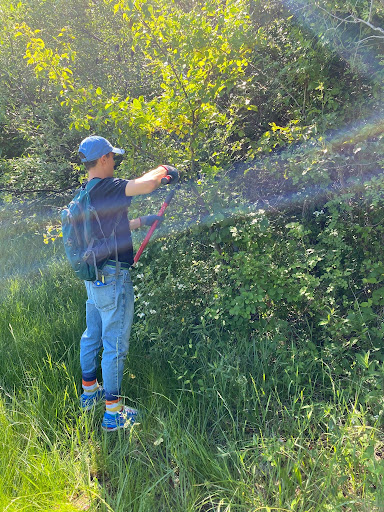Author: Joe Himmelfarb ’24
To be frank, I began my work with the Plant Conservation Team at NYC Parks this summer with floor-low expectations about the City’s vegetation. This was my first experience in conservation work, and New York City seemed quite the unlikely focus for biodiversity preservation. America’s largest city, and the epitome of urban life, I’d always carried the impression that such a place would be ‘biologically sterile.’ Situated on poisoned soils and polluted waterways, NYC had to be a lost cause for nature. But I was wrong. I just didn’t have the eyes to see it yet.
Do you remember anything of the wilderness you pass on the side of the road? The scenes of a stroll through Brooklyn’s Prospect Park? Hiking at Van Cortlandt Park in the Bronx? For me, I only saw green, and I only remembered green. That’s just how it always went. I was plant blind.
“Plant blindness” is pervasive in our culture. Save for botanists and other plant experts, we don’t really notice vegetation. We don’t distinguish between plants as individuals, and we fail to remember them afterwards.
But, imagine you learn the language of the trees, the shrubs and bushes, the grasses and sedges. You hop on the Northeast Regional Train and head up to NYC for the weekend to explore vegetation in the City’s natural areas. What do you expect to find? A lack of biodiversity or a lot? Widespread foreign monocultures, or persevering populations of native growers?
This summer, I learned to see the worst of plant invasions and the best of native resilience. One conservation site is now infested with a species originally imported for horticulture. The same few agricultural weeds dominate habitats across the five boroughs, and one sensitive species was squeezed out to extinction. But, beneath it all, there are plants that have grown here since time immemorial. And while there are indeed some native populations that thrive, many species tell the story of rebellion. Ten slick, fragrant herbs that poke between the grasses. Three short, spiky golden flowers growing defiantly in the shadows of a million foreign giants. One majestic lily that finally gets the chance to flower.
Plant blindness is a bidirectional buffer. We can’t understand the extent of ecological degradation in an ocean of green. Nor can we appreciate the extent of natural perseverance when it’s hidden in plain sight. In overcoming plant blindness, I have developed a new understanding of urban biodiversity. A new set of expectations; a new brand of optimism. It is not a battle of a million versus one––a million invasives closing in on a final plant rebel. Rather, conservation is the hope that one can grow into a million. Don’t give up yet on New York City.


What a wonderful piece, illustrating the power of broadening our awareness, reviving our optimism, and really getting involved! Thanks for this story, Joe!